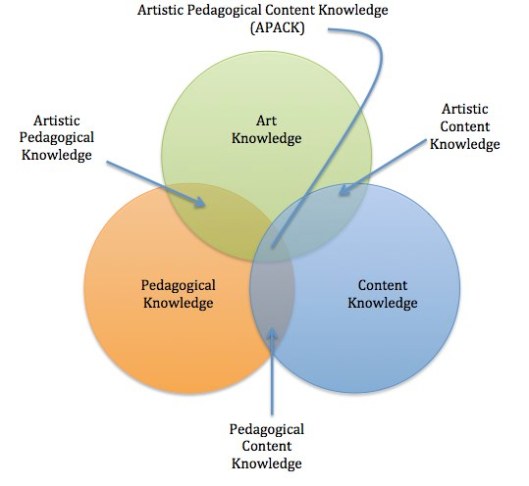I made a career change one year ago, and shortly thereafter stopped posting to this blog. For the past year I’ve been directing my energies toward supporting arts integration efforts in schools throughout Minnesota through a project at the Perpich Center for Arts Education, a Minnesota state agency. Granted, I’m still working with technology, primarily focusing on tech strategies for professional development. I’m using tools and techniques that I honed while working in Minneapolis Public Schools, things like Moodle for professional development and Google docs for collaboration. However, I find my classroom-teacher-self being drawn more and more into the nitty-gritty arts integration work we are doing, work that involves aligning benchmarks and learning goals with rich assessments in cross disciplinary units of study. And interestingly, I’m seeing more and more similarities between technology integration and arts integration.
These similarities became more clear the other day as my Perpich team was looking at the Arizona Technology Integration Matrix (originally developed by Florida Center for Technology Integration). It was interesting that the characteristics being considered for good technology integration–active, collaborative, constructive, authentic, and goal directed–aligned with several characteristics on the Perpich Arts Integration Rubric! Both rubrics call for the active alignment of student learning goals and objectives, constructive-student centered work, and authentic processes in the learning environment.
Of course, you may be saying–”Duh! Are you actually surprised?” Isn’t it obvious that both arts integration and technology integration have a goal of enriching, and energizing, learning through student engagement and differentiated learning. In fact, it’s not difficult to envision the TPACK model for technology integration being transformed into an arts APACK model! (As I think about it, there is rich fodder for further posts on this idea!)
But there are differences, particularly considering how our Perpich team approaches arts integration. Arts integration for us is more that just adding arts processes and products to increase learning in another content field. For us, the arts standards need to be of equal importance in the learning tasks and should be woven into the actual work of students. So, students should see and be able to verbalize their arts learning along side the content area objectives. The arts are very much visible and present in the learning environment.
By contrast, when technology is integrated well it should be virtually transparent to the student. Technology is merely a part of the student learning toolkit that they select from when constructing their personal learning journey.
So, what does this all mean in terms of my own personal educational journey and how I reflect on technology ideas in this blog? Over the past year I have been gravitating toward how technology may be woven into arts integration units. For instance, storytelling that brings together music, art and language can be enriched, and products published, through the use of different technology tools. I plan to focus upcoming postings on digital storytelling using the iPad. Our Triton High School (Dodge Center, MN) team has been working on just such a project this month. Here is a final project from one of the students.
Perhaps you have some ideas for topics I could develop around technology enriched arts integration projects? I’d love to hear from you in the comments section!


Thanks for pointing to Lee Schulman’s work on teacher professional knowledge. I think it’s a really useful construct for describing our activity. Its useful for us to describe our activity as increasing the pedagogical content knowledge reservoirs of individual teachers and teacher teams – the special knowledge of how to build student knowledge and skill.
This is a great way for the arts to interact with another audience or partner – those interested in technology. Arts folks are often accused of preaching to the choir. This blog post engages a potential new group because there is clearly a lot in common and much to discuss.